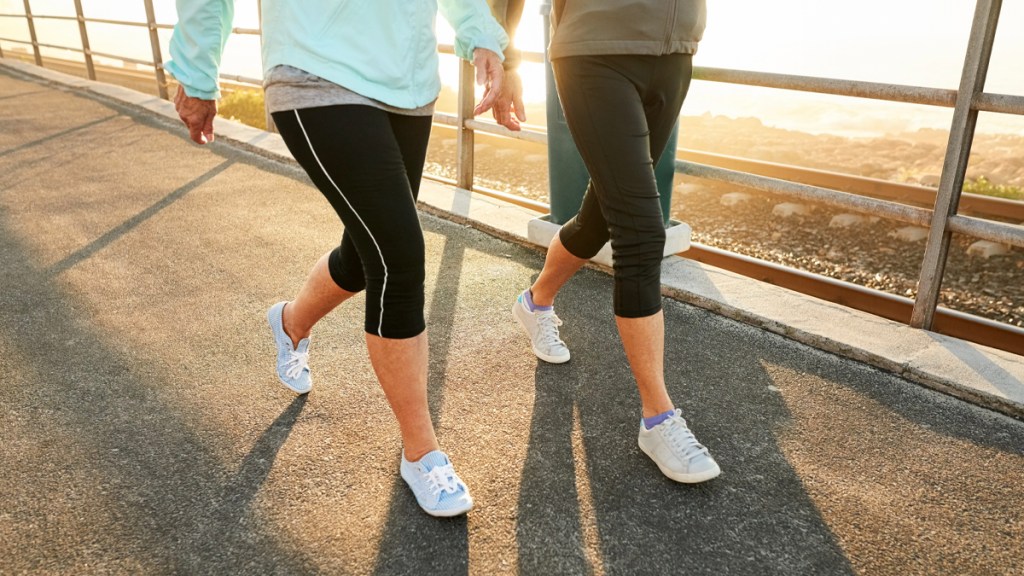Looking to improve your well-being, enhance your appearance, and increase your lifespan? Look no further than walking. While this advice may not be groundbreaking, its significance is often underestimated.
As humans, walking is ingrained in our nature. It’s the primary mode of transportation that our ancestors relied on to migrate and settle in different regions. Despite the well-established health benefits of walking, many people neglect this simple activity in favor of more strenuous exercises.
In this article, I’ll delve into the numerous and extensive advantages of walking for your health. This is the second installment in a series exploring The Great Upside-Down Movement Pyramid, which serves as a comprehensive framework for lifelong well-being. Discover why incorporating more walking into your routine, especially after reducing sedentary behavior, can greatly contribute to your overall health and longevity.
Calming the Fires
The demands of modern life often lead to suboptimal health outcomes. Factors like sedentary lifestyles, processed food consumption, and prolonged periods of sitting contribute to increased inflammation, which in turn is linked to rising rates of chronic diseases such as cancer, type 2 diabetes, heart disease, and obesity.
While changing careers and adopting a completely different lifestyle may not be feasible for everyone, relying on pills and antioxidant supplements isn’t the only solution. Instead, incorporating more movement into your daily routine, particularly through activities like brisk walking, can be a highly effective step in addressing these health issues.
Engaging in aerobic exercises like brisk walking enhances the body’s ability to combat oxidative damage, serving as both an anti-inflammatory and an antioxidant. When we move our muscles, they release signaling molecules known as myokines, which, despite some being associated with inflammation, actually reduce inflammation when stimulated by exercise. This is why regular walking can significantly lower the risk of metabolic diseases, certain cancers, and even conditions like erectile dysfunction, offering natural health benefits without the need for medication.
Losers Walk
While calorie counting remains a popular method for weight loss, the evidence supporting its effectiveness is not as robust as commonly believed. Not all calories are equal, and solely focusing on creating a calorie deficit through increased exercise does not guarantee sustainable weight loss in the long term.
However, there is a silver lining to this complex equation. Some activities that may not burn a significant number of calories can still contribute to weight management. Instead of fixating on extreme calorie restriction, simply reducing sedentary behavior, such as sitting for prolonged periods, and incorporating more walking into your daily routine can lead to significant fat loss without the need for a gym membership or participation in weight loss programs with limited scientific support.
Every Little Helps
As previously emphasized, vigorous treadmill workouts alone are insufficient to counteract the detrimental effects of a sedentary lifestyle on life expectancy. Therefore, it’s imperative to incorporate movement into your daily routine, and walking more is an excellent starting point. For many individuals, this can be initiated by incorporating walking into their commute. Utilize public transportation? Consider disembarking a few stops earlier. Prefer driving? Opt for a park-and-ride option and conclude your journey with a brisk ten to twenty-minute walk. Concerned about tardiness? Embrace it – brisk walking is linked to heightened benefits.

Expanding on this, here are several strategies to integrate more walking into your day:
- Break it up: Use phone calls or brief intervals between meetings as opportunities for short walks. Accumulating walking time in brief segments of two or three minutes can enhance metabolism.
- Lunchtime walks: Even a brief lunch break provides an opportunity for walking. Encourage colleagues to join for a more relaxed and productive work environment.
- Walk around meals: Utilize the time while dinner is cooking to take a quick lap. Alternatively, enjoy a post-meal stroll.
- Romantic walks: Take a cue from your online dating profile and embark on a scenic walk during sunset.
Importantly, the cumulative effect of multiple ten-minute walks can be more beneficial than a single extended walk. Incorporating ten-minute walks to and from work, during lunch breaks, and after dinner constitutes a commendable starting point.
Pro Tips
For those who prefer structured plans before embarking on a walking regimen, two common questions often arise: where should I walk, and at what pace?
Location matters: While many studies investigating the health benefits of walking utilize treadmills in laboratory settings or provide participants with pedometers to track steps, the specific location of walking is less critical. Research indicates that walking in various environments yields significant health improvements. However, studies suggest greater psychological benefits from walking outdoors in green spaces compared to indoor or urban settings. Therefore, choosing an environment that resonates with you, whether it’s a beach, river, forest, or park, is likely to offer the most benefits.
Pace for longevity: Now, onto the burning question: how fast should you walk to outpace the grim reaper? Science has an answer, and it’s approximately three miles per hour. Other studies propose that walking at eighty percent of your maximum speed is the most efficient and sustainable pace. To estimate these speeds:
- Measure a nearby half-mile loop using a map or online pedometer and aim to complete it in ten minutes (equivalent to three miles per hour).
- Find a short stretch where you can walk as briskly as possible for twenty seconds and cover the same distance in 25 seconds, representing a pace at eighty percent of your maximum.
However, remember that the goal is to establish a walking routine and cultivate habits rather than fixating on a specific speed. Prioritize enjoying your walks, as faster doesn’t necessarily equate to better in all cases.
Summary
Skipped to the end? Here’s what you need to know:
Transition from sitting to walking Strive for at least thirty minutes daily Walk briskly at eighty percent of your maximum speed, or maintain a pace of at least three miles per hour.
Or simply walk with the urgency of being late for work.
For optimal results, choose your preferred outdoor setting and invite friends along for a walk.










